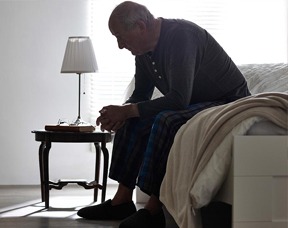Symptoms can include urinary frequency, nocturia, difficulty emptying, leaking, bladder stones, and blood in the urine. Enlargement of the prostate happens naturally as men age, but this process can unfortunately press on the urethra and result in the annoying urinary side effects mentioned. Although an enlarged prostate cannot typically be avoided, the silver lining is that it is benign. It is often referred to as benign prostatic hyperplasia (BPH) or benign prostatic hypertrophy for this reason. The exact cause of BPH is not known, but it is thought that changes in the balance of the sex hormones during the aging process are the main contributing factor.
Treatment options available for BPH fall under medications and minimally-invasive surgical procedures. Which treatment option is best for you, depends on the size of your prostate, your symptoms, your overall treatment goals, your age, and your overall health. If medications are not effective, or your prostate is too large for medication to make a sufficient difference, surgery to reduce the size of the prostate may be necessary.
Transurethral resection of the prostate (TURP), or the modified Button TURP, is a procedure to remove portions of prostate which press on the urethra, and block the normal flow of urine from the bladder. This type of surgical procedure targeting the prostate, has a goal of relieving troublesome urinary symptoms caused by an enlarged prostate. During a TURP, a resectoscope, both visual and surgical instrument, is inserted through the tip of the penis and into the urethra, the tube that carries urine from your bladder. Using the resectoscope, the surgeon trims away excess prostate tissue that surrounds the urethra, and increases the size of the channel to allow you to empty your bladder. A typical hospital stay is about one day with a two-three days of catheterization.
Let’s break things down further:
Button TURP
- Recently developed in the past few years
- Creates the same prostatic channel as Standard TURP
- Sustained effect on voiding possibly 10-15 years as the prostatic channel appears widely open as in Standard TURP
- Faster ablation of large prostates which decreases anesthesia risks
- Uses saline irrigation which causes no risk of seizures, no time limit to resect large prostates, almost no bleeding during the procedure
- Usual transurethral irritative symptoms last for 4-6 weeks
- Risk of erectile dysfunction, decreased sexual libido, and retrograde ejaculation is the same as the Standard TURP.
- May or may not require an overnight stay.
- Bladder catheter stays in place for 2-3 days
TURP has several advantages over the newer technologies. For men with other health problems that make the newer procedures inadvisable, TURP is the best option for treatment of BPH. If the prostate has grown too large, newer procedures they may not be effective, and some may feel more comfortable with surgery than an unfamiliar technology.
Additional advantages include:
- Visual, hands-on access to the prostate
- Immediate removal of excess tissue
- Can be coupled with other procedures, e.g., removing small bladder stones
- Longevity of use with supportive data on overall efficiency, safety, and success rates
- Traditionally taught in medical schools so doctors have extensive experience


